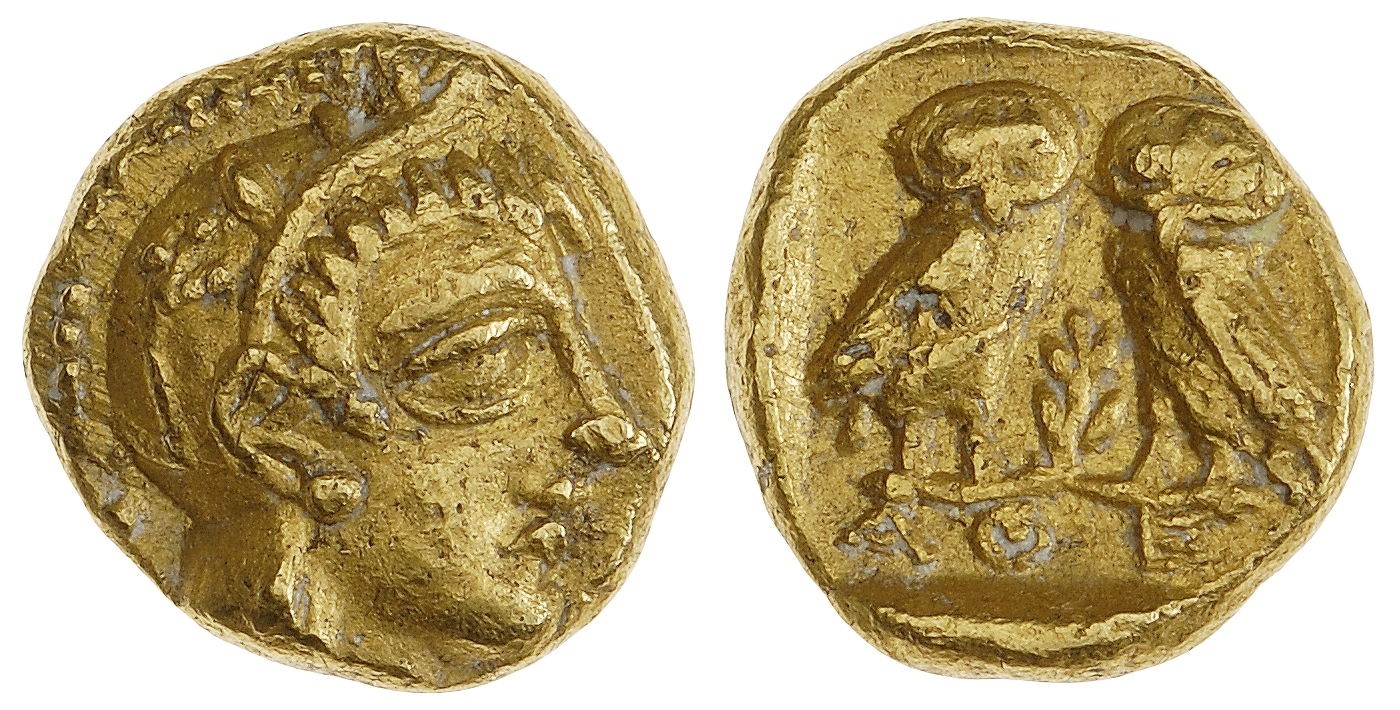
Classical Period (499 – 323 BC)
Starting around 500 BC the mining at Lavrion reached its greatest importance for the culture and welfare of the Greek. The Persians had conquered northern Greece and the silver mines there. Athens had to rely entirely on the Lavrion mines as a result. The importance of these mines was constantly in the awareness of Athens’ citizens, as they received an annual dividend from this state property. In Maroneia (Μαρώνεια), the area today known as Kamariza (Καμάριζα), alone there are more than 1000 shafts and 120 – 150 km of galleries at the Third Contact, dating from the Classical Period (Conophagos, 1980).
At that time a change of paradigms was evident in Athens’ approach to warfare. The vast majority of soldiers were common able-bodied men who were inducted upon need. This was a cheap way to maintain an army, but its effectiveness was nowhere near that of a professionally trained fighting force. To have a navy meant to be saddled with maintenance costs, even when no campaign was ongoing, and with the pay of crews of professional sailors. With the sound financial background Athens could afford to embrace this fundamentally new concept. Starting 545 BC profits that had been a trickle started to flow as a steady stream into Athens’ state budget. Part of that revenue was invested into a navy of 70 fighting ships. This force was initially needed to keep Athens’ local rival, Aegina, at bay. In 483 BC, when the rich ores of Maroneia, were finally fully in production, the lease alone for these silver mines was one hundred talents (600.000 drachmas, or 2.5 tons of silver), and the profits were taxed separately. It is to the everlasting glory of the Athenian leader Themistokles that he persuaded the citizens of Athens to forgo the annual dividend from the mines and to use it to extend the fleet instead. The building of a ship cost 12.000 Drachmes (52 kg of silver). Athens built 130 of the most powerful warships of that time, the “Trireme”, a clear statement that they wanted complete and undisputed domination of the Aegean Archipelago.

The Persians that had been lurking in northern Greece finally decided to attack southwards. Under the personal command of King Dareios they moved south but were beaten in the famous battle at Marathon in 490 BC, however not decisively so. Dareios died soon after, so it took a decade until the Persians tried again. King Xerxes of Persia, son and successor to Dareios sought revenge in 480 BC. With an army of 120.000 soldiers and 700 ships Xerxes crossed over to the Greek mainland after having submitted Naxos and marched on towards the Greek capital. The land forces met at the Thermophyles, a narrow pass leading towards the Attica peninsula, and the only way from northern Greece for such a vast army. After 5 days of heavy fighting the small Greek force holding the pass, consisting mainly of Spartans, lost by the cunning of a traitor. Meanwhile the Athenians used the time to assemble a fleet of 314 warships, slightly smaller than the Persian, but highly mobile and effective. Of these 314, 200 were built in Athens; the rest came from its allies. Athens fell to the Persians, but only after its population had been evacuated to the island of Salamis. There the naval forces clashed, and the Greek were able to lure the Persians into a battle in a narrow straight, where the greater numbers of the Persians did not come to bear. On September 28th 480 BC the Persian fleet was annihilated, and Xerxes had to leave Athens, but not before having it devastated. The Persian invasion of Greece ended in spring of the next year, when the Greek warships cut off Xerxes’ supply lines. The population of Athens started to rebuild its city in splendor. 450 BC Pericles had the Acropolis of Athens extended, and some magnificent buildings erected throughout town. Athens lived in wealth and prosperity, took control over the entire archipelago, and became the world’s center of culture and science.

The main source of income for public spending was the lease of the mines, which was granted for either 3 or 10 years. The lease depended on the size and the expected revenue, which was taxed additionally. Still the owners became enormously rich, triggering envy among those not bestowed with a lease. It is reported that the mine owner Callias earned 1.200.000 Drachmes from his holdings in 449 BC, about 5.4 metric tons. The profit was taxed with 1/20 part going to the state treasury. In the vaults of the Panthenon, where the treasury was kept, 270 tons of silver were kept just before the Pelloponese Wars. About the same quantity was about in the form of currency.
To ensure a continuing functionality of the mines, laws concerning the safety were continually reviewed and adapted, and infractions were severely punished. To enforce these laws a separate court had been established. From its proceedings we know that a man called Difilos was sentenced to death by beheading for removal of some support pillars that contained high-grade ore in 330 BC. In the same year, the whole property of a man called Periokles was seized and the man himself branded and enslaved for removing ore in a critical zone, causing a cave-in in his neighbors mine. This harsh and rigorous rule not only affected the safety in the mines but also ensured a smooth production, thus a continuous flow of money into the state treasury.
The time between the final defeat of the second Persian invasion of Greece at Plataea in 479 BC and the beginning of the Peloponnesian War in 431 BC was the most prolific in the history of the Lavrion mines.
